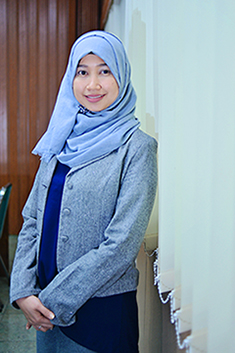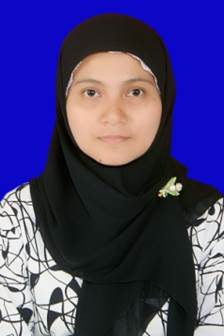Optimasi Aristoflex®ï¸ AVC dan Propilen Glikol Gel Tabir Surya Rimpang Kunyit dengan Metode Desain Faktorial
Downloads
Pendahuluan: Kunyit (Curcuma domestica) mengandung kurkumin yang cocok digunakan sebagai pelindung kulit dari sinar ultraviolet (UV). Produk tabir surya topikal perlu dikembangkan, salah satunya gel, sediaan paling stabil dan tidak menunjukkan pemisahan fase. Optimasi lebih menguntungkan dibandingkan metode trial and error dari segi biaya, waktu, dan keakuratan hasil. Tujuan: Mengetahui pengaruh kombinasi Aristoflex® AVC dan propilen glikol pada sifat fisik gel ekstrak rimpang kunyit, mengetahui formula gel ekstrak rimpang kunyit yang optimum, dan mengetahui pengaruh kombinasi Aristoflex® AVC dan propilen glikol pada nilai SPF dari sediaan gel ekstrak rimpang kunyit. Metode: Gel dibuat empat formula dengan komposisi Aristoflex® AVC 1% dan 3% dan propilen glikol 5% dan 10%. Parameter yang digunakan meliputi daya sebar, daya lekat, viskositas, dan nilai SPF yang dihitung secara in vitro menggunakan spektrofotometri. Hasil uji dioptimasi dengan metode desain faktorialmenggunakan Design Expert 7.1.5. Hasil: Kombinasi Aristoflex® AVC dan propilen glikol berpengaruh terhadap daya sebar, daya lekat, viskositas dan nilai SPF yang dihasilkan. Hasil penelitian menunjukkan formula optimum gel ekstrak rimpang kunyit pada kombinasi Aristoflex® AVC dan propilen glikol masing-masing 1,68% dan 9,87% sehingga diperoleh nilai daya sebar 5,1 cm, daya lekat 2,018 detik, viskositas 110,008 dPas, dan nilai SPF 11,935. Kesimpulan: Kombinasi Aristoflex® AVC dan propilen glikol memberikan pengaruh pada daya sebar, daya lekat, viskositas, dan nilai SPF sediaan gel ekstrak rimpang kunyit. Proporsi Aristoflex® AVC 1,68% dan propilen glikol 9,87% merupakan formula optimum gel ekstrak rimpang kunyit.
Adithi, P., Arshad, B. K. & Roopesh, S. K. (2017). Broad Spectrum UVA & UVB Photoprotectants: an Overview. Journal of Pharmaceutical Research; 16; 113-147.
Anggraeni, C. A. (2008). Pengaruh Bentuk Sediaan Krim, Gel, dan Salep terhadap Penetrasi Aminofilin sebagai Antiselulit secara In Vitro Menggunakan Sel Difusi Franz. Skripsi; Fakultas Matematika dan Ilmu Pengetahuan Alam Departemen Farmasi Universitas Indonesia, Depok.
Bayere, L., Yarasi, S. & Loppnow, G. R. (2003). Solvent Effects on Sunscreen Active Ingredients Using Raman Spectroscopy. Journal of Raman Spectroscopy; 34; 743-750.
Binks, B. P., Brown, J., Fletcher, P., Johnson, A. J., Marinopoulos, I., Crowther, J. M. & Thompson, M. A. 2016. Evaporation of Sunscreen Film: How the UV Protection Properties Change. Applied Material and Interfaces; 8; 13270-13281.
Boer, Y. B., May, V. F. & Brun, P. L. (2015). Practical Pharmaceutics: an International Guideline for the Preparation, Care, and Use of Medicinal Products. New York: Springer International Publishing.
Cho, J. W., Park, K., Kweon, G. R., Jang, B. C., Baek, W. K., Suh, M. H., Kim, C. W., Lee, K. S. & Suh, S. I. (2005). Curcumin Inhibits the Expression of COX-2 in UV-B Irradiated Human Keratinocytes (HaCaT) by Inhibiting Activation of AP-1: p38 MAP Kinase and JNK as Potential Upstream Targets. Experimental and Molecular Medicine; 37; 186-192.
Contreras, M. D. & Sanchez, R. (2002). Application of a Factorial Design to the Study of the Flow Behavior, Spreadibility, and Transparency of a Carbopol ETD 2020 Gel. International Journal of Pharmaceutics; 234; 149-157.
Dana, S. F., Nguyen, D., Kochhar, J. S., Liu, X. & Kang, L. (2013). UV-curable Pressure Sensitive Adhesive Films: Effects of Biocompatible Plasticizers on Mechanical and Adhesion Properties. Royal Society of Chemistry; 9; 6270-6281.
Garg, A., Aggarwal, D., Garg, S. & Singla, A. K. (2002). Spreading of Semisolid Formulations (an update). Pharmaceutical Technology; 26; 84-105.
Ivaniuk, O. I., Yarnyakh, T. G., Hrudko, V. O. & Kovalevska, I. V. (2018). Determination of Vaginal Gel Composition of the Basis of Biopharmaceutical and Rheological Researches. Annals of Mechnikov Institute; 4; 43-47.
Juwita, A. P., Yamlean, P. V. & Edy, H. J. (2013). Formulasi Krim Ekstrak Etanol Daun Lamun (Syringodium isoetifolium). Jurnal Farmasi Indonesia; 2; 8-12.
Lee, S. Y., Pung, Y. Y., Khor, B. K., Kong, W. E., Tan, C. T. & Teo, S. Y. (2016). Lipid-based Delivery System for Topical Phenytoin. Journal of Applied Pharmaceutical Science; 6; 14-20.
Liu, X., Zhang, R., Shi, H., Li, X., Li, Y., Taha, A. & Xu, C. (2018). Protective Effect of Curcumin Against Ultraviolet a Irradiation-Induced Photoaging in Human Dermal Fibroblasts. Molecular Medicine Report; 17; 7227-7237.
Mokodompit, A. N., Hosea, J. E. & Weny, W. (2013). Penentuan Nilai Sun Protective Factor (SPF) secara In Vitro Krim Tabir Surya Ekstrak Etanol Kulit Alpukat. Jurnal Ilmiah Farmasi; 2; 83-85.
Murphy, G. (2014). Photocancerogenesis Strategies For Prevention. Proceedings; 2nd European Course of Photodermatology, Dublin.
Peneva, P., Andonova, V., Dimcheva, T. & Kassarova, M. (2017). Technological and Biopharmaceutical Characterization of Carbopol-Based Ketoprofen Emulgels. Indian Journal of Pharmaceutical Education and Research; 52; 212-217.
Raissi, S. & Farzani, R. E. (2009). Statistical Process Optimization Through Multi-Response Surface Methodology. World Academy of Science, Engineering and Technology; 51; 267-271.
Rathod, H. J. & Mehta, D. P. (2015). A Review on Pharmaceutical Gel. Acta Scientifica International Journal of Pharmaceutical Science; 1; 33-47.
Rhys, N. H., Gillams, R. J., Collins, L. E. & Callear, S. K. (2016). On the Structure of an Aqueous Propylene Glycol Solution. The Journal of Chemical Physics; 145; 224504.
Silalahi, K. N., Fahrurroji, A. & Kusharyanti, I. (2015). Optimasi Formula Losio dengan Kombinasi Zat Aktif Vitamin C dan Vitamin E sebagai Antipenuaan Kulit Serta Uji Stabilitas Losio. Jurnal Mahasiswa Farmasi Fakultas Kedokteran UNTAN; 3; 1-17.
Singh, S., Govind, M. & Bothara, S. B. (2013). A Review on In Vitro-In Vivo Mucoadhesive Strength Assessment. Pharm Tech Medica; 1; 221-229.
Sinko, P. J. (2011). Martin's Physical Pharmacy and Pharmaceutical Sciences: Physical Chemical and Biopharmaceutical Principles in the Pharmaceutical Sciences. Philadelphia: Lippincott Williams and Wilkins.
Skotarczak, K., Osmola-Mankowska, Lodyga, M., Polanska, M. & Adamski. (2015). Photoprotection: Facts and Controversies. European Review for Medical and Pharmacological Sciences; 19; 98-112.
Syamsuni, H. (2005). Farmasetika Dasar dan Hitungan Farmasi. Jakarta: Penerbit Buku Kedokteran EGC.
Varges, P. R., Costa, C. M., Fonseca, B. S., Naccache, M. F. & Mendes, P. R. (2019). Rheological Characterization of Carbopol® Dispersions in Water and in Water/Glycerol Solutions. Fluids; 4; 1-20.
Wardiyah, S. (2015). Perbandingan Sifat Fisik Sediaan Krim, Gel, dan Salep yang Mengandung Etil p-Metoksisinamat dari Ekstrak Rimpang Kencur (Kaempferia galangal Linn.). Skripsi; Fakultas Kedokteran dan Ilmu Kesehatan UIN Syarif Hidayatullah, Jakarta.
Yati, K., Mahdi, J., Misri, G., Mardiastuti & Lusi, P. D. (2018). Pengaruh Variasi Konsentrasi Hydroxy Propyl Methyl Cellulose (HPMC) terhadap Stabilitas Fisik Gel Ekstrak Tembakau (Nicotiana tabaccum L.) dan Aktivitasnya terhadap Streptococcus mutans. Pharmaceutical Sciences and Research; 5; 133-141.
Yuliani, S. H. (2010). Optimasi Kombinasi Campuran Sorbitol, Gliserol, dan Propilen Glikol dalam Gel Sunscreen Ekstrak Curcuma mangga. Majalah Farmasi Indonesia; 21; 83-89.
1. The copyright of this journal belongs to the Editorial Board and Journal Manager with the author's knowledge, while the moral right of the publication belong to the author.
2. The formal legal aspect of journal publication accessibility refers to the Creative Commons Attribution-Non-Commercial-Share Alike (CC BY-NC-SA), which implies that the publication can be used for non-commercial purposes in its original form.
3. Every publication (print/electronic) is open access for educational, research, and library purposes. In addition to the objectives mentioned above, the editorial board is not responsible for copyright infringement


.jpg)















